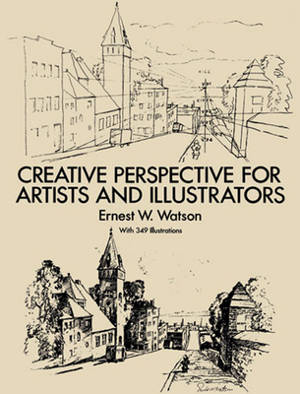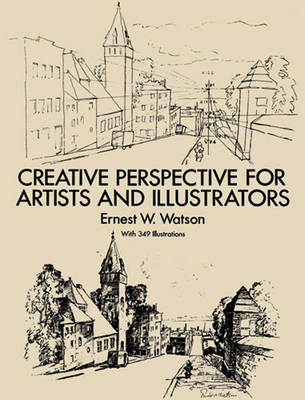
- Afhalen na 1 uur in een winkel met voorraad
- Gratis thuislevering in België vanaf € 30
- Ruim aanbod met 7 miljoen producten
- Afhalen na 1 uur in een winkel met voorraad
- Gratis thuislevering in België vanaf € 30
- Ruim aanbod met 7 miljoen producten
Zoeken
Creative Perspective for Artists and Illustrators
Creative Perspective for Artists and Illustrators
Ernest W Watson
€ 22,45
+ 44 punten
Omschrijving
In this thought-provoking practical guide, a noted artist and educator demonstrates that learning to violate the rules of perspective (profitably) is as important for the practicing artist as learning the principles of perspective themselves. Only in this way can students free themselves from the constraints of tradition and find their own imaginative paths. However, it is vital that students first have a solid grasp of classical perspective before they can think about adapting it creatively.
In presenting the principles of perspective drawing, Mr. Watson devotes a chapter each to step-by-step discussions of such topics as the picture plane, foreshortening and convergence, the circle, the cone, three-point perspective, universal perspective, figures in perspective, and much more. To illustrate his points he offers expert analysis of the works of such leading illustrators as John Atherton, V. Bobri, R. M. Chapin, Jr., Albert Dorne, Robert Fawcett, Constantin Guys, W. N. Hudson, Carl Roberts, Ben Stahl, and Aldren A. Watson, as well as drawings by Pieter de Hooch and Paul Cézanne. The result is a ground-breaking study that artists, illustrators, and draftsmen will find invaluable in learning to create works with convincing perspective.
Ernest W. Watson taught at Pratt Institute for over 20 years, co-founded and served as editor-in-chief of the magazine American Artist, and co-founded the prestigious art publishing house of Watson-Guptill.
In presenting the principles of perspective drawing, Mr. Watson devotes a chapter each to step-by-step discussions of such topics as the picture plane, foreshortening and convergence, the circle, the cone, three-point perspective, universal perspective, figures in perspective, and much more. To illustrate his points he offers expert analysis of the works of such leading illustrators as John Atherton, V. Bobri, R. M. Chapin, Jr., Albert Dorne, Robert Fawcett, Constantin Guys, W. N. Hudson, Carl Roberts, Ben Stahl, and Aldren A. Watson, as well as drawings by Pieter de Hooch and Paul Cézanne. The result is a ground-breaking study that artists, illustrators, and draftsmen will find invaluable in learning to create works with convincing perspective.
Ernest W. Watson taught at Pratt Institute for over 20 years, co-founded and served as editor-in-chief of the magazine American Artist, and co-founded the prestigious art publishing house of Watson-Guptill.
Specificaties
Betrokkenen
- Auteur(s):
- Uitgeverij:
Inhoud
- Aantal bladzijden:
- 160
- Taal:
- Engels
- Reeks:
Eigenschappen
- Productcode (EAN):
- 9780486273372
- Verschijningsdatum:
- 14/01/1993
- Uitvoering:
- Paperback
- Formaat:
- Trade paperback (VS)
- Afmetingen:
- 211 mm x 279 mm
- Gewicht:
- 435 g

Alleen bij Standaard Boekhandel
+ 44 punten op je klantenkaart van Standaard Boekhandel
Beoordelingen
We publiceren alleen reviews die voldoen aan de voorwaarden voor reviews. Bekijk onze voorwaarden voor reviews.











